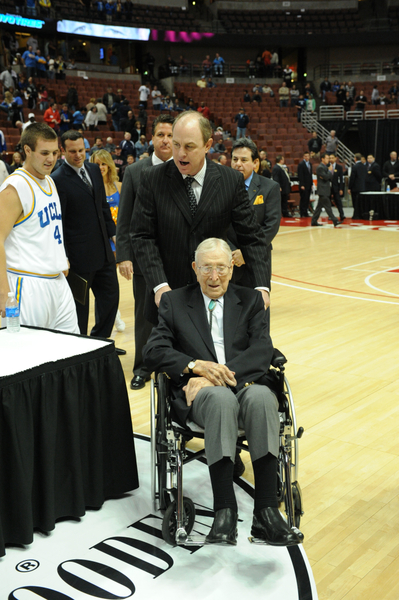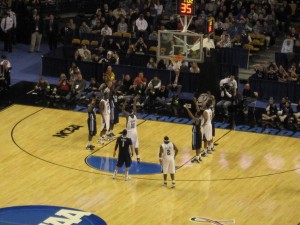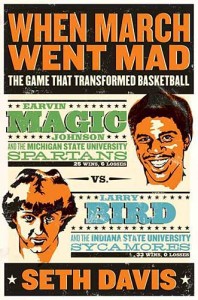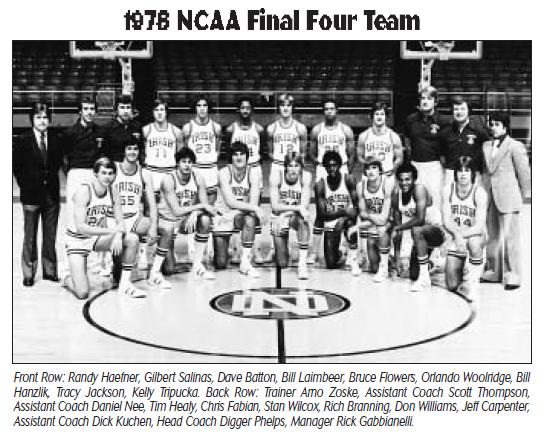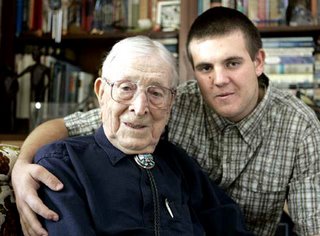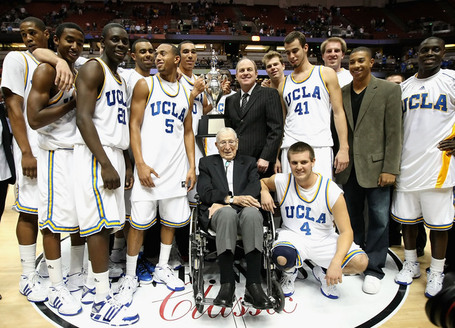Posted by jstevrtc on July 31st, 2009
By now you’ve probably seen the list published earlier this week by The Sporting News naming their Fifty Greatest Coaches of All Time, across all sports. And most likely you’ve at least seen that the legendary John Wooden tops that list, a selection about which this blogger has not heard one single detractor, not even one with a bad argument. What’s interesting to me is the names from the college basketball world that follow Wooden on that list. Here they are; I added two coaches at the end who did not make the TSN list (though one would think they might) just for the discussion:
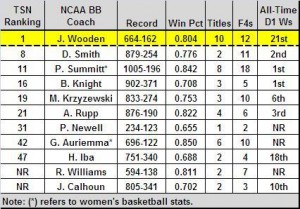
The first thing that strikes me is where John Wooden ranks on the all-time Division 1 wins list. 21st??!? It’s always been obvious that in these lofty heights number of wins has never been a great indicator of coaching ability, since teams just didn’t play as many games until the 80s when that number really took off. That would seem to make winning percentage a more important statistic. But not on this list, it appears. If that statistic mattered here, you wouldn’t expect Dean Smith to be quite as high, and you’d expect Adolph Rupp to be higher; you would certainly expect Roy Williams to at least make the list. Final fours? Nope. Dean Smith would be appropriately stationed, but Mike Krzyzewski would be higher along with Rupp, and again you’d think Williams would get on. And so on. No single major statistic appears to have guided the thinking, here.
The question is, does this reduce the validity or credibility of the list? According to TSN, their panel consisted of “seven World Series-winning managers, four Super Bowl champion coaches, and the winningest coaches in the NBA, NHL, and college basketball.” I’m not saying they necessarily got anything wrong — who better to ask about coaches than players and other coaches? It is at least obvious that there’s only one thing the panel considered, at least in terms of how the best coaches in college basketball fell on the list — reputation.

No contest. (credit: scout.com)
The selection of Wooden at the top cannot be argued because he’s got the reputation, the aura, and too much of the overall look of the statistics on his side. After that it’s a crapshoot depending on what you think is the most important determiner of coaching greatness. To the TSN panel, it’s something akin to curb appeal that influenced them. Would Bob Knight not have been higher than 16th on an all-time coaches list were it not for his acerbic nature? Would Adolph Rupp and Dean Smith have been closer together were it not for Rupp’s reputation (whether you think he deserves it or not) as a bigot, and/or Smith having an image bordering on — dare I say it — holy? Is Roy Williams still being punished for his inability to win the big one while at Kansas? And what of Pat Summitt? She’s the only one who could even challenge Wooden in terms of college basketball coaches; her numbers are barely conceivable, and then you throw in her 1oo% graduation rate (yes, that’s right, every Tennessee player on her watch who has completed their eligibility there has also graduated). Should she be higher than 11th on the whole thing? And if you want to talk about the effect of reputation on this list, there probably isn’t a better example than the appearance of the late great Pete Newell. Only 357 games coached, a single title, only two Final Fours, and the lowest winning percentage on the coaches on the above list. But he goes and forms the Big Man Camp — and eventually what he would call the Tall Women’s Basketball Camp (I guess “Big Woman’s Camp” wasn’t an appealing name for such a place) — and finds a way to coach players in a way that didn’t directly show up as wins and losses, and here he is, on the overall list ahead of people like Joe Torre, Tom Osborne, Toe Blake, and Chuck Daly. In addition, if you ask any coach, they’ll tell you that, before he died, you’d have been hard-pressed to find a better coach and man than Mr. Newell. Does he belong on the list?
I don’t know the answers to these questions, but I do know one thing — the list generates great discussion (especially in the summer lull), so come on…let’s hear from the Duke fans who think Coach K got screwed, let’s hear from the UNC fans who think Smith-Williams should be 1-2. Let’s hear from the UK fans who think Rupp is too great to be even considered on such a list. Knowing the passion of college hoop fans and the readers of this site, it should be good.
| media matters
| Tagged: adolph rupp, Big Man Camp, bob knight, Chuck Daly, dean smith, duke, Geno Auriemma, Henry Iba, jim calhoun, Joe Torre, john wooden, kentucky, mike krzyzewski, north carolina, pat summitt, pete newell, roy williams, tennessee, The Sporting News, Toe Blake, tom osborne
Share this story






























